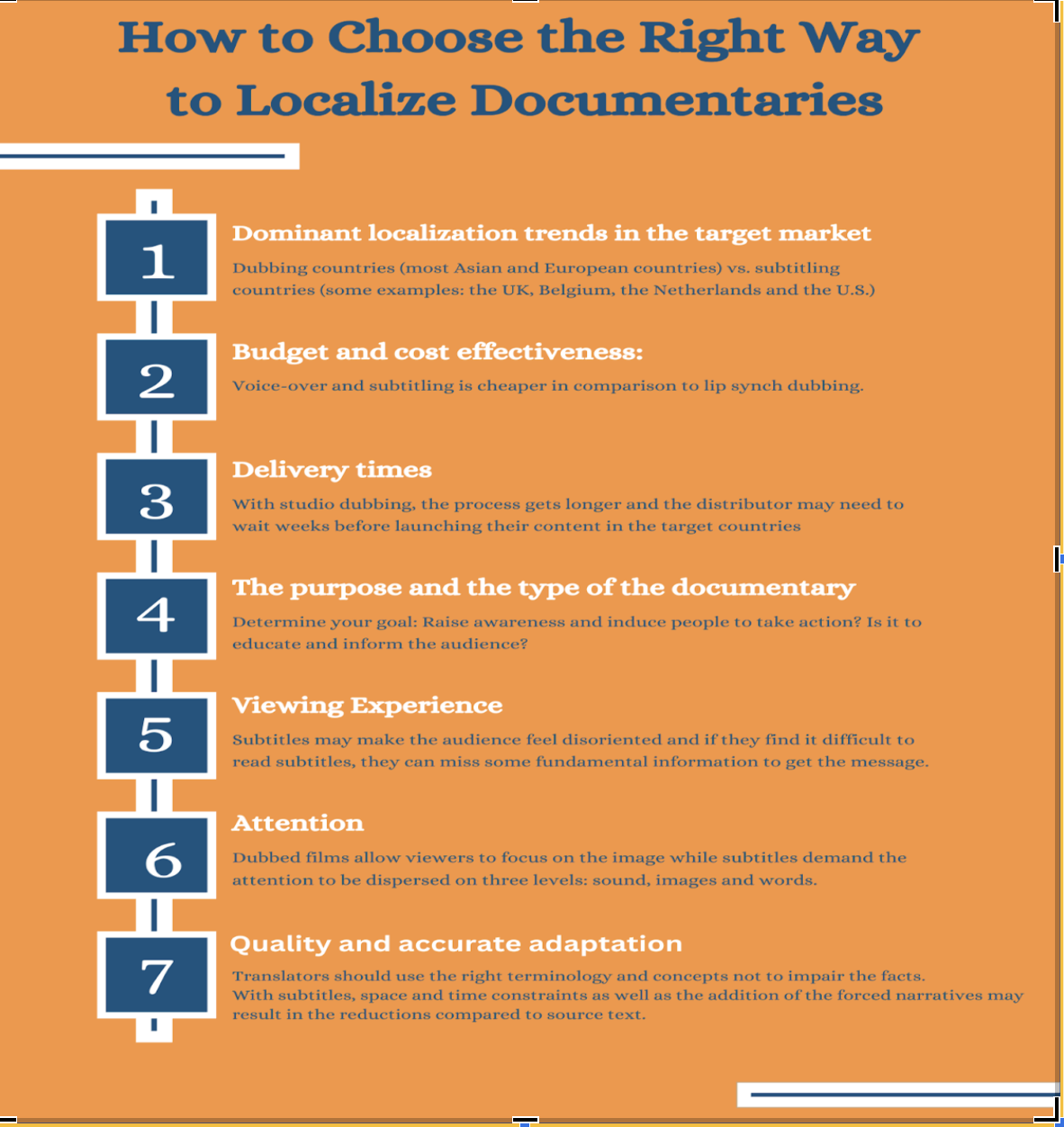- Home
- Resource Center
- Articles & Videos
- Penguins, Language, and Localization: The Case for Multilingual Documentaries
25 November 2024
Penguins, Language, and Localization: The Case for Multilingual Documentaries

“Penguins have a language of their own. They communicate through their eyes, bodies, walks, and voices. Fascinating,” I thought while watching the March of the Penguins (2015) documentary.
Although I speak English fluently, I appreciated the English captions that made it easier to grasp the nuances of these lovely animals’ life journeys. With subtitles and dubbing available in multiple languages, the film became accessible to a wider audience.
But what if it weren’t a Netflix production?
What if this documentary had remained locked in a single language, preventing countless viewers from engaging with it due to language barriers?
It’s disheartening, and the truth is, a lot of content remains unheard simply because it hasn’t been localized through subtitling and dubbing.
But where do you, as a filmmaker or content owner, start? What localization methods fit your goals? What key factors should be on your radar before localizing a documentary? And how can AI-powered subtitling and dubbing simplify this process while delivering quality results?
If you’re looking for answers to these questions, keep reading.
Techniques for Localizing Documentaries in Different Languages
I'll explain the most widely used localization techniques for documentaries at the localization company I'm working for: voiceover, lip-sync dubbing, and subtitle translation. I have a strong hunch that all industry players are seeing more demand for these techniques from content owners. That’s not surprising. As you’ll see, these methods—especially with AI now in the mix—offer greater efficiency and quality.
Voice-over Voice-overs in films start with the original audio, then the narration in the target language smoothly joins in. The original sound often drifts into the background, letting the audience focus on the new voice. This method proves to be more cost-effective than lip sync dubbing. It's not only about cutting costs. A lot of viewers actually prefer voice-over. You can hear the natural pauses, the rhythm, the way people really talk. It’s like getting a taste of where the story comes from, while still understanding every word. Some shows rely on foreign dialogues that are key to the plot. Take Netflix, for example. They recommend translators create forced narrative files for these parts instead of using voice-over.
But how much foreign dialogue there is matters. While there isn't a universally accepted percentage for how much FN content should appear on-screen versus being conveyed through voiceover, platforms like Netflix emphasize clarity and viewer experience.
Subtitling
Subtitle translations are a great option for audiences familiar with imported productions. It’s similar to watching a classic film in its original language. There’s something special about hearing the actors’ voices as they were meant to be heard.
AI has been increasingly used to speed up this process. Ideally, AI generates a rough draft that is then handed over to a subtitle translator for refinement. Relying solely on AI doesn’t work. It often leads to inaccuracies, cultural missteps, and even fabricated content.
AI is best used as an assistant, speeding up the process by giving translators a draft to work from instead of a blank page.
In documentaries, subtitles may not always be the best solution. This genre often attracts a wide age range, and older viewers, in particular, can struggle with reading subtitles. Imagine trying to follow important health information while straining to read text on the screen. It’s not ideal.
Research shows that while adults can recall information equally well from both subtitles and dubbing, children often miss important details when they are trying to read along. This can affect their understanding of the content.
Ultimately, the choice between subtitles and dubbing depends on the nature of the content, the target audience, and how to best communicate the message. Each method has its advantages, and choosing the right one can significantly influence how well the story connects with viewers.
Lip Synch Dubbing
Lip sync dubbing takes the dialogue from an audiovisual production and translates it into another language, all while making sure the characters' lip movements and expressions match perfectly.
The goal? To create an experience so authentic that viewers forget they’re even watching something in translation.
But when it comes to documentaries, lip sync dubbing can be a tougher sell, mainly because it’s less cost-effective. Still, content owners and distributors need to pay attention to their audience’s preferences and the specific demands of their content market. And with AI now making waves in dubbing, considering its potential advantages over traditional methods is becoming more and more important.
Let me tell you about a digital video distributor that's been using a localization platform for the past couple of years. They've AI-dubbed over 500 videos with the help of experts from this platform.
The outcome? A remarkable 69% revenue increase from these dubbed videos compared to their untranslated content. Even more impressive is that 67% of that revenue came from viewers outside of France, the country they’re based in.
Localization is helping them connect with a global audience.
7 Things to Consider Before Documentary Localization
You should understand your audience to pick the right localization method. Here are some key factors to keep in mind the following.

There’s no one-size-fits-all approach to localizing documentaries for different languages. Whether you choose voiceover, lip-sync dubbing, or subtitling, each method has its strengths and can work better in specific contexts. But do we really need to settle on just one method? What if a documentary includes both subtitles and dubbing in multiple languages? This can significantly expand reach. By giving audiences the choice, content owners enable more people to connect with their work in a way that feels most natural to them.
Final Remarks
Documentaries are windows into real-life stories, knowledge, and cultures. Whether it’s through subtitling, dubbing, or a combination of both, these solutions ensure that more people can connect with those stories, no matter where they’re from.
The choice between subtitles and dubbing isn’t purely technical. It requires;
-understanding your audience,
-their needs,
-and the message you want to convey.
Some may prefer the authenticity of original voices with captions, while others opt for a dubbed version that allows them to focus fully on the visuals. The key is to offer that choice.
AI is changing how localization works for documentaries in practical ways. For subtitling, AI generates time-coded transcripts and accurate translations that lay the groundwork for translators. This significantly speeds up the process. In dubbing, AI-powered voice synthesis produces human-like synthetic voices, which helps content owners avoid the lengthy and expensive studio dubbing processes. However, as mentioned earlier, relying solely on AI isn’t the solution. Once the synthetic voices are generated, AI dubbing editors step in to refine the output.
I wish everyone would watch March of the Penguins and be mesmerized by their struggle for survival. The hunt for food pulls the mates apart for months, yet they eventually embrace again, with their little penguin chicks around. It’s a beautiful example of connection and communication. Documentary makers deserve to reach a wider audience through localization. It helps ensure their stories resonate with viewers, no matter what language they speak.

Burcu Uluçay
As a graduate in Translation, Burcu began by translating an English novel into Turkish. That’s when her passion for storytelling took off. She earned her Master’s in Critical and Cultural Studies from the University of Westminster on a scholarship, which deepened her interest in content creation. Now, as the Content Writer & Storyteller at Ollang, she manages the company’s blog. Her goal is to highlight the technological developments in content localization and connect content owners with OLabs, Ollang’s AI-powered localization platform. For Burcu, effective content writing feels like a direct conversation with the reader.


